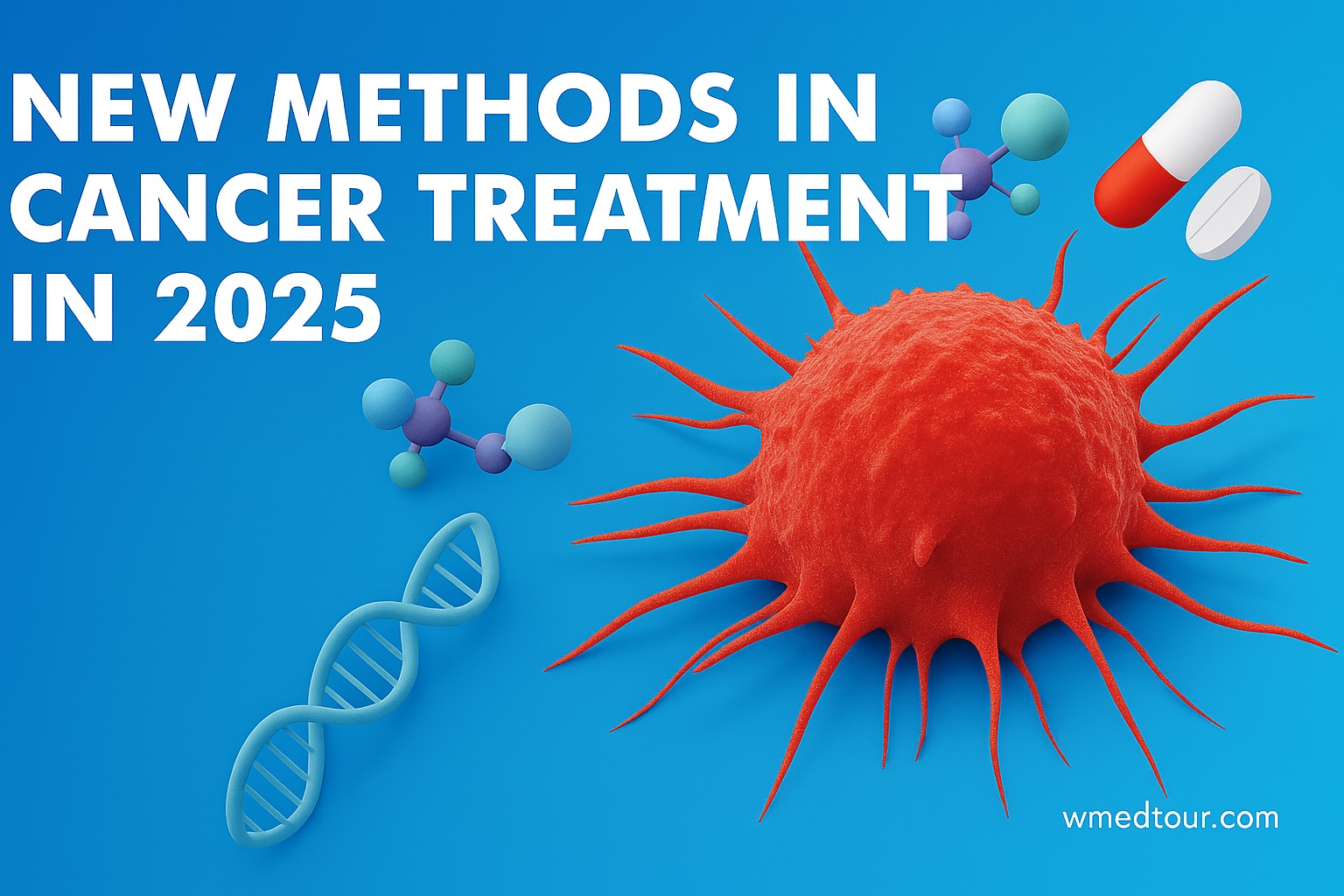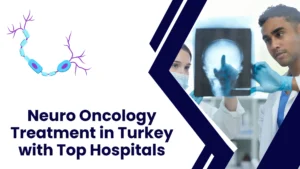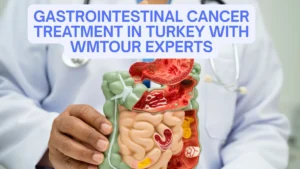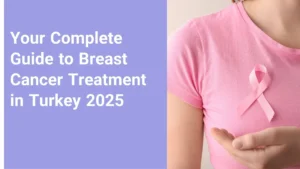For individuals and professionals navigating the complex world of oncology, keeping pace with the rapid advances is essential. Cancer treatment has never evolved as quickly as it is right now. Indeed, the landscape of care has fundamentally changed from a standard set of protocols to a dynamic, molecular-driven strategy. This in-depth guide explores the most significant New methods in Cancer treatment in 2025, providing an authoritative yet easy-to-understand overview of the breakthroughs defining the future of oncology.
The Revolution in Immunotherapy: Beyond the Checkpoint
Immunotherapy—harnessing the body’s own defenses—has been a game-changer for the last decade. However, the New methods in Cancer treatment in 2025 focus on making these treatments smarter, more targeted, and effective against tumor types that previously resisted them, such as solid tumors.
1. Personalized Cancer Vaccines ($mRNA$ Technology)
Inspired by the success of $mRNA$ technology in vaccine development, personalized cancer vaccines represent one of the most exciting new frontiers. These vaccines are completely custom-made. They analyze a patient’s specific tumor to identify unique mutations—called neoantigens—and then teach the immune system to recognize and attack only the cells displaying those markers. This is the definition of precision and a genuine step forward in making treatment truly individual. Trials are expanding globally, offering new hope for patients with minimal residual disease (MRD) to prevent recurrence, and even impacting the overall cost of cancer treatment by avoiding late-stage recurrence.
Pros and Cons of Personalized Vaccines
- Pros: Highly specific targeting of cancer cells; minimal off-target damage to healthy tissue; potential for long-term immune memory against recurrence.
- Cons: Complex, time-consuming, and expensive to manufacture for each patient; efficacy can be limited by the tumor’s mutational load; still largely in clinical trial phases.
2. Next-Generation CAR T-Cell Therapy for Solid Tumors
Chimeric Antigen Receptor (CAR) T-cell therapy has been incredibly successful against blood cancers (leukemia and lymphoma). The greatest hurdle has always been applying it to solid tumors (like lung, breast, and brain cancers), which are guarded by a complex, immunosuppressive microenvironment. However, 2025 brings new hope. New methods in Cancer treatment in 2025 include Dual-Targeting CAR T-cells, which attack two tumor proteins simultaneously to prevent cancer cells from escaping. Furthermore, innovations like EchoBack CAR T-cells, which can be activated and recharged using focused ultrasound, are showing promise in extending the cell’s lifespan and efficacy within the tumor site, a significant breakthrough presented at ASCO 2025.
Pros and Cons of Next-Gen CAR T-Cells
- Pros: Demonstrated powerful, long-lasting responses in previously untreatable cancers like recurrent glioblastoma; overcomes antigen escape by targeting multiple markers; technologies like ultrasound activation enhance safety and control.
- Cons: Risk of serious side effects like cytokine release syndrome (CRS) and neurotoxicity; high initial cost; complex manufacturing logistics; limited availability outside of specialized global centers.
Precision Oncology & The Power of Molecular Targeting
Precision oncology is about treating the patient, not just the disease. It uses molecular and genomic testing to identify the specific genetic drivers of a tumor. The New methods in Cancer treatment in 2025 in this area are defined by ultra-specific drug development and combination strategies.
3. Antibody-Drug Conjugates (ADCs) and Bispecific Antibodies
ADCs are often described as “guided missiles” that pair a monoclonal antibody with a potent chemotherapy drug. The antibody finds a specific marker on the cancer cell, and the drug is released directly inside the cell, minimizing systemic toxicity. Similarly, Bispecific Antibodies bridge the gap between an immune cell and a cancer cell, forcing them into proximity so the immune system can mount a direct attack. The expansion of these agents to treat a broader range of solid tumors, including new approvals for non-small cell lung cancer (NSCLC) and breast cancer subtypes, is a major trend in 2025. These are truly transformative treatments. They are changing the paradigm for patients with advanced or relapsed cancers like multiple myeloma, who often seek the best value cancer treatment options abroad.
Pros and Cons of ADCs and Bispecific Antibodies
- Pros: Exceptional specificity means less damage to healthy tissues; high concentration of chemotherapy delivered directly to the tumor; proven efficacy in several hard-to-treat cancers.
- Cons: Potential for ocular or nerve toxicity from the chemotherapy payload; risk of developing resistance over time; still relatively new and expensive therapies.
4. Next-Generation Selective Estrogen Receptor Degraders (SERDs)
For the large population of patients with Estrogen Receptor-Positive ($ER+$) breast cancer, new oral SERDs (like Camizestrant) are proving more effective than older hormone therapies, particularly in tumors with the common $ESR1$ mutation. The ability to identify this specific mutation using a simple liquid biopsy and then match it with a highly effective oral drug is a perfect example of how precision medicine is refining first-line treatments and de-escalating the need for extensive chemotherapy. This targeted approach is making a tangible difference in patient quality of life and survival.
Technology Integration: AI, Nanomedicine, and Early Detection
The convergence of technology and medicine is delivering New methods in Cancer treatment in 2025 that are profoundly changing how cancer is diagnosed, monitored, and treated at a microscopic level. For many seeking a comprehensive medical path, these technological advances are pivotal, often requiring the resources of major global medical tourism hubs.
5. Artificial Intelligence (AI) in Diagnostics and $Genomics$
AI is rapidly integrating into oncology practices globally. It’s no longer confined to predicting outcomes; it is actively guiding treatment selection. Sophisticated machine learning models can process vast amounts of genetic and clinical data faster than any human. For example, AI-driven tools are being used to analyze the entire cancer genome to predict which patients with lung cancer will respond best to immunotherapy based on their specific mutation profile, such as those with $NF1$ mutations. This is vital for avoiding ineffective treatments and getting patients onto the most potent regimen immediately. Furthermore, AI models are also being used to refine the process of clinical trial matching and data extraction, speeding up drug development.
6. Multi-Cancer Early Detection (MCED) Tests and Liquid Biopsies
The dream of catching cancer before it causes symptoms is becoming a reality. Liquid biopsies—simple blood tests—can detect tiny fragments of circulating tumor $DNA$ ($ctDNA$) released by cancer cells. In 2025, MCED tests are showing promising results in identifying multiple high-incidence cancers (like colorectal, pancreatic, and ovarian) in their earliest stages. Early detection, especially for cancers with poor screening options, dramatically improves survival rates. This development is arguably one of the most impactful New methods in Cancer treatment in 2025 for the general population.
7. Nanomedicine and Light-Activated Drug Delivery
The field of nanomedicine involves using tiny particles (nanoparticles) to package and deliver drugs directly to the tumor. New chemicals, such as cyanine-carborane salts, are being developed to make a decades-old therapy—Photodynamic Therapy (PDT)—safer and more effective. These “smart bomb” chemicals accumulate in cancer cells and are activated by near-infrared light, which can penetrate deep into tissues. Crucially, these new salts flush out of the body quickly, eliminating the dangerous light sensitivity patients previously experienced for months. This advance opens the door to treating deep-seated solid tumors like metastatic breast cancer with extreme precision and minimal side effects, a major step forward for patients seeking breast cancer treatment in Turkey or any advanced center.
Pros and Cons of Technology Integration
- Pros: Earlier, non-invasive detection (Liquid Biopsies); highly precise drug delivery, reducing systemic toxicity; AI-driven personalization for optimal treatment selection and clinical trial matching.
- Cons: High cost of advanced AI and liquid biopsy testing; data privacy concerns; regulatory hurdles for new devices; limited global access, especially in developing healthcare systems.
Comparative Overview of Emerging Therapies (2025)
To summarize the impact of these New methods in Cancer treatment in 2025, the following table compares the revolutionary approaches against traditional standards:
| Treatment Modality | Target/Mechanism | Primary Use/Status in 2025 | Key Advantage |
|---|---|---|---|
| Personalized $mRNA$ Vaccine | Patient-specific neoantigens (immune priming) | Adjuvant setting (post-surgery) to prevent recurrence. Expanding clinical trials. | Highest specificity, potential for long-term immune memory. |
| Next-Gen CAR T-Cell | Dual-target proteins, ultrasound activation | Solid tumors (e.g., Glioblastoma, Prostate Cancer). Rapidly moving into broader trials. | Breaks solid tumor barriers; durable, long-lasting anti-tumor activity. |
| Antibody-Drug Conjugates (ADCs) | Targeted delivery of chemotherapy payload | Advanced/Relapsed Solid Tumors (e.g., NSCLC, Breast, Myeloma). FDA approvals expanding rapidly. | High potency, minimizes systemic side effects of chemotherapy. |
| Liquid Biopsy ($MCED$) | Detection of $ctDNA$ (circulating tumor DNA) | Early screening for high-risk, asymptomatic populations. Clinical validation expanding. | Non-invasive early detection; potential to shift cancer diagnosis timeline. |
Hypothetical Case Study: Maria’s Personalized Journey
Maria, a 55-year-old patient from a country with limited oncology resources, traveled abroad after a diagnosis of metastatic Triple-Negative Breast Cancer (TNBC), a notoriously aggressive subtype. Her initial treatment included standard chemotherapy, but the cancer recurred quickly.
In 2025, a global oncology center used a **liquid biopsy** to analyze her $ctDNA$. The results revealed a unique set of neoantigens and a molecular signature that suggested poor response to further chemotherapy. Instead, the oncology team pursued a multi-pronged approach based on New methods in Cancer treatment in 2025.
First, she was enrolled in a clinical trial for a **personalized $mRNA$ cancer vaccine**. Her unique neoantigens were synthesized into a custom vaccine, which was administered to ‘train’ her immune system. Concurrently, she received an **Antibody-Drug Conjugate (ADC)** targeting a protein overexpressed on her specific tumor cells. The ADC provided an immediate, highly potent cell-killing effect.
The vaccine primed her immune system while the ADC rapidly reduced the tumor burden. Six months later, her $ctDNA$ levels were undetectable, and imaging showed a complete metabolic response. She continues on the vaccine regimen to maintain immune surveillance against recurrence, demonstrating the power of combining molecular diagnostics with targeted immunotherapies. This personalized care path offers a lifeline that traditional protocols could not.
Who is This For? Accessing Advanced Cancer Care
This information on New methods in Cancer treatment in 2025 is essential for several groups:
- Patients with Advanced or Relapsed Cancers: If standard treatments have failed or the cancer is highly aggressive (e.g., Glioblastoma, pancreatic, TNBC), seeking consultation for CAR T-cell therapy trials, ADCs, or neoadjuvant immunotherapies is critical. These patients represent the primary beneficiaries of the latest breakthroughs, and often require access to specialized centers, which might be found via medical tourism guides like Germany’s medical travel regulations or South Korea’s advanced cancer centers.
- High-Risk Individuals and Families: Anyone with a strong family history of cancer, or those who have had previous successful treatment, should discuss Liquid Biopsy ($MCED$) screening with their doctor for early, non-invasive detection of recurrence or new primary tumors.
- Oncology Professionals and Researchers: Staying current on dual-target CAR T, $mRNA$ vaccine trials, and the expanding applications of ADCs is necessary to offer state-of-the-art care. Understanding the role of AI in genomic analysis is now a core competency.
Frequently Asked Questions (FAQ) on New methods in Cancer treatment in 2025
These answers provide simple, non-interactive explanations for the most common patient inquiries.
1. Are personalized cancer vaccines available to everyone?
Answer: Personalized cancer vaccines are primarily available through clinical trials at specialized institutions globally. While not yet a standard commercial therapy, their accessibility is rapidly expanding in 2025, especially for patients with a high risk of recurrence.
2. What makes the new CAR T-cells effective against solid tumors?
Answer: New methods in Cancer treatment in 2025, specifically the latest CAR T-cells, overcome solid tumor resistance by using dual-targeting to hit two cancer markers simultaneously and by incorporating innovative engineering (like EchoBack or IL-9 receptors) that allows them to persist longer and infiltrate the dense tumor environment more effectively.
3. Is AI diagnosing cancer now?
Answer: AI is not replacing doctors, but it is dramatically assisting them. AI algorithms are used to analyze complex medical images and genomic data much faster than humans, improving the speed and accuracy of diagnosis and predicting how a patient will respond to a specific treatment, optimizing the treatment plan.
4. How is Photodynamic Therapy (PDT) being improved?
Answer: PDT is being improved with new light-sensitive chemicals (cyanine-carborane salts). These chemicals are designed to clear from the body faster, which eliminates the months-long extreme light sensitivity patients previously experienced. They are also activated by near-infrared light, allowing treatment of deeper tumors.
5. What is the biggest advantage of an Antibody-Drug Conjugate (ADC)?
Answer: The biggest advantage is precision drug delivery. The ADC specifically recognizes and binds to a cancer cell, and only then is the potent chemotherapy payload released, which minimizes the drug’s exposure to healthy organs and reduces side effects.
6. Can a single blood test detect all types of cancer?
Answer: Multi-Cancer Early Detection ($MCED$) liquid biopsies are being developed and validated to detect fragments of $DNA$ from multiple high-incidence cancers in a single blood draw. While they show promise, they are still primarily used for screening high-risk populations and require further validation for population-wide use.
7. Are these new treatments less expensive than chemotherapy?
Answer: Currently, most of these innovative treatments (especially cell therapies and highly specialized ADCs) are significantly more expensive than standard chemotherapy. However, their potential for better long-term outcomes and fewer side effects may lower overall healthcare costs in the long run.
8. How can I access these treatments if I don’t live in a major medical hub?
Answer: Many individuals utilize medical tourism services. Reputable global hubs often have partnerships with top-tier hospitals offering these advanced trials and therapies. It is crucial to consult guides on international treatment, such as pediatric oncology guides or specific treatment options like prostate cancer treatments abroad.
9. What is ‘Neoadjuvant Therapy’ in the context of 2025 breakthroughs?
Answer: Neoadjuvant therapy means giving a systemic treatment (like an immunotherapy or targeted drug) before surgery. The goal, as seen in trials for anaplastic thyroid cancer, is to shrink the tumor or even eliminate microscopic disease, making the subsequent surgery more successful.
10. Is there a new approach to breast cancer treatment with fewer side effects?
Answer: Yes. For certain $ER+$ breast cancers, the use of next-generation oral Selective Estrogen Receptor Degraders ($SERDs$) is showing significant promise. These highly targeted oral drugs offer efficacy comparable to or better than older, less specific therapies, often with fewer systemic side effects, allowing patients to consider treatment options in places like Turkey.
11. What role does $NF1$ mutation play in immunotherapy response?
Answer: AI-driven genomic analysis in 2025 has highlighted that $NF1$ mutations can actually improve a patient’s response to immunotherapy in cancers like lung cancer. This finding is critical as it helps oncologists select the optimal, highly personalized therapy from the start. This AI-driven insight is a great example of the New methods in Cancer treatment in 2025.
12. Where can I find more information on pediatric cancer advances in 2025?
Answer: Advances in pediatric oncology are closely related to adult breakthroughs, particularly in CAR T-cells and precision medicine. You should consult resources focusing on specialized care, such as pediatric cancer in Iran or other highly focused centers, as discussed on our site. Leading cancer research institutions also publish regular updates.
The Road Ahead: Hope and Access
The convergence of powerful cellular engineering, refined molecular targeting, and transformative computational tools defines the New methods in Cancer treatment in 2025. The overall message is one of immense hope: cancer is increasingly becoming a manageable, and in many cases, curable disease. Our ability to offer targeted, less toxic therapies means a better quality of life and higher survival rates for patients globally.
However, access to these cutting-edge treatments remains a challenge. Many of the most advanced protocols and clinical trials are centered in major medical tourism destinations. Exploring your options and understanding the regulatory landscape is paramount. You can find comprehensive guides on topics ranging from lung cancer treatment in Iran to advanced neuro-oncology right here.
We are dedicated to connecting patients with the most effective, safest, and most personalized care available anywhere in the world. If you or a loved one are exploring the next steps in your treatment journey, remember that the latest breakthroughs can offer a path forward where older methods could not.




